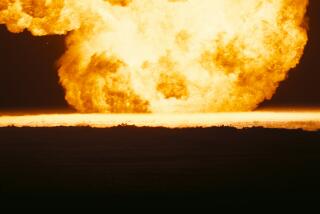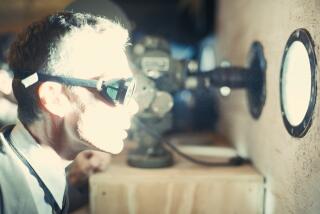New View on Origin of Atomic Blast Glass
- Share via
Smooth jade-green glass formed by the world’s first atomic bomb test 60 years ago at Trinity Site in New Mexico wasn’t created the way previously believed, say two scientists whose hobby is studying sand from anthills.
The first atomic detonation, on July 16, 1945, in what is now White Sands Missile Range, turned the sand in the blast area into a glassy, somewhat radioactive substance that became known as trinitite.
The story for decades was that the sand was heated instantaneously to nearly 5,000 degrees, melting it.
But that’s not what happened, say Los Alamos National Laboratory chemist Robert Hermes and Bill Strickfaden, a retired physicist for a Navy contractor.
Their study of trinitite and little beads of trinitite in anthills at Trinity Site concluded that the sand was blasted into the air at superheated temperatures.
“The thing we came up with was a lot of the material that came from the crater got thrown up in the air so hot it melted in the air,” Hermes said. “It rained down as these little droplets.”
The ground was so hot the sand puddled together when the droplets hit, he said.
“The gist is, the puddling came from the raining down of droplets
The researchers said their idea was confirmed by the fact that trinitite was more radioactive on its glassy top than on the sand-like bottom. The blast threw a huge radioactive cloud into the air, they said, but the ground where the material fell was less radioactive.
“We can essentially prove this because we found the beads themselves are a lot more radioactive than the trinitite on the ground,” Strickland said.
Their work was published in the Nuclear Weapons Journal.





